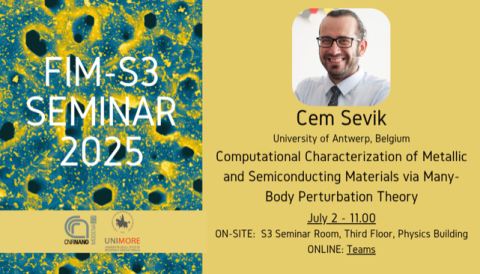
Speaker: Cem Sevik University of Antwerp, Belgium
The accurate prediction of optical and excitonic properties in low-dimensional materials presents a unique set of theoretical and computational challenges—particularly when dealing with the competing electronic characteristics of semiconducting and metallic systems. In this talk, I present a set of diverse, yet interconnected studies conducted using first-principles calculations within the framework of Many-Body Perturbation Theory (MBPT). For semiconducting transition metal dichalcogenides (TMDs), we investigate the influence of external electric fields and strain on the excitonic landscape in bilayer WSe₂. We reveal how stacking-dependent interlayer hybridization governs nonlinear Stark shifts and spectral symmetry-breaking, explaining recent experimental anomalies. In Janus-based TMD heterostructures, we demonstrate how intrinsic dipolar fields modify band alignments and enhance phonon-mediated generation of interlayer excitons, highlighting the role of exciton–phonon coupling in carrier separation. Turning to metallic layered systems, we address the longstanding challenge of optical characterization in MXenes. By carefully incorporating intraband transitions, we show that while GW corrections significantly alter the band structure, sometimes even producing pseudo-gapped features, excitonic effects remain minimal, validating the use of the independent particle approximation (IPA) for optical property prediction in this class. Finally, in vanadium dioxide (VO₂), a temperature-driven phase transition material, we capture both the strong excitonic effects in the insulating monoclinic phase and the reliable RPA-level response in the metallic rutile phase, achieving excellent agreement with experimental spectra across regimes. Drawing on these results, I will reflect on the advantages, limitations, and subtleties encountered in our extensive experience applying first principles level Many Body Perturbation theory across this broad materials landscape—illustrating what makes computational many-body theory both fruitful and, at times, challenging.
Host: Fulvio Paleari (CNR)